The Economics Of Coal Burning Simply Do Not Pencil Out
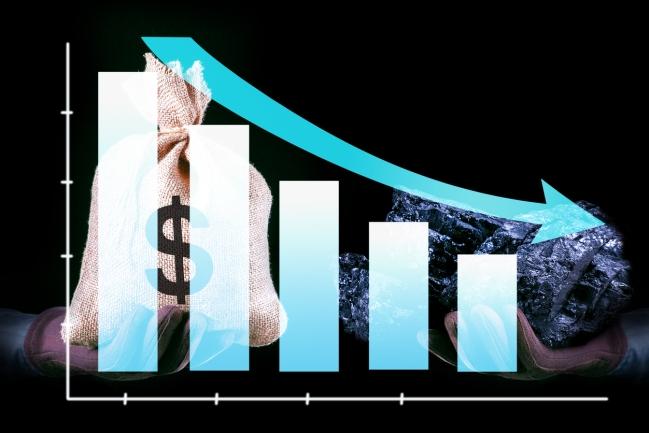
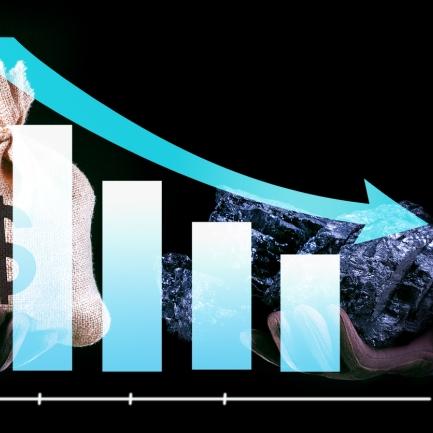
Did any of your loved ones get a lump of coal for the holidays? Though threatened from time to time in our household, our kids did juuuuuuuuust enough to earn actual Christmas presents this year (that’s tongue-in-cheek - if my kids ever read this years down the line, I want you to know how dang proud of you I am for how you handled your second year of COVID-19).
Coal for naughty listers is a funny old tradition, so I went poking around as to its origins. It seems tied to the fact that 18th and 19th century homes often had coal-burning fireplaces. If you were bad, Santa would just reach down and stick the closest thing at hand in your stocking. It wasn’t because coal was undesirable per se, but rather because it was convenient.
Why Coal is on the naughty list
It amuses me that coal has had a negative reputation for hundreds of years. Back then, it might have just been a holiday threat made by parents of disobedient youths, but now we know better. Now we know just how dirty and undesirable coal really is. Here is the coal naughty list:
- Underground coal mining is dangerous for workers, with threats including mine shaft collapses, fires, and health threats like black lung;
- Though safer for workers, mining coal via mountaintop removal and other forms of surface mining destroys habitats and can displace entire communities;
- Burning coal releases sulfur dioxide, which causes acid rain and respiratory illnesses;
- Burning coal releases nitrogen oxides, which cause smog and respiratory illnesses;
- Burning coal releases fine particulate matter, which causes smog, haze, and respiratory illnesses (seeing a pattern here?);
- Burning coal releases mercury and other heavy metals, which can cause neurological and developmental health problems;
- Burning coal produces fly ash and bottom ash, which can leach into water supplies;
- Burning coal releases carbon dioxide into the atmosphere, which is the primary contributor to human-caused global warming, and;
- Mining coal often causes a release of underground methane emissions, which also are a significant contributor to climate change.
I guess it’s a good thing that people don’t burn this stuff in their living rooms anymore. Coal as an energy source carries significant public health hazards that go beyond carbon.
Are coal regulations enough?
To be fair, many of these negative impacts from the coal industry are controlled via various environmental regulations. For instance, air scrubbers help to capture sulphur dioxide emissions and coal ash ponds store the toxic coal residue. They don’t always work, however, and the environmental harm from disasters like coal ash pond overflows is immense.
Even when they do work to contain environmental damages, these coal safety measures are expensive. It turns out that we’ve been paying for artificially cheap coal for decades, often thanks to powerful corporate and lobbying interests resisting safety regulations every step of the way.
As more and more Americans realize the climate change threat, you might think that it is concerns about greenhouse gases that would present the biggest challenge to the coal industry.
It turns out, however, that it’s just pure economics that is driving the recent retirement of coal plants.
The math doesn’t work for coal plants
This Associated Press article from last fall spells that out clearly. A new wastewater rule was announced at the end of August 2020, and it required many coal power plants to take further action to clean up their discharges into waterways. As that rule begins to come into effect, many power companies that operate coal plants are announcing plans to shut them down rather than bring them into compliance. I’m seeing that (and cheering that) here in my home state of Georgia as well.
It’s all part of the broader trend of coal becoming uneconomic. I pulled data from the US Energy Information Administration’s website to see electricity generation by energy source over the years. Math is incoming, but bear with me here.
In 2000, the electric power industry in America generated 3,802 billion kilowatt hours (kWh) of electricity, with 1,966 billion of them coming from coal (that’s 51.7% of the total). In 2020, the numbers were 4,007 billion kWh of total American electricity with 773 billion of them coming from coal (19.3%). That’s a massive reduction both in gross terms and in grid mix percentage.
Alternatives to coal burning: What are the options?
It must be said that the primary driver of these reductions in coal use was the rapid adoption of natural gas. That energy source went from 601 billion kWh in 2000 (15.8% of the total) to 1,624 billion kWh in 2020 (40.5%). That’s a growth in natural gas kWh of 270%. Unfortunately, natural gas as an energy source has its own problems (after all, it’s also a fossil fuel that has to be pulled from the earth’s crust), so what about renewables?
I took a look at solar and wind in particular, and together they produced a measly 6 billion kWh in 2000 (0.2% of the total). In 2020 though, the number had soared to 427 billion kWh (10.6%). That’s an increase of more than 7000%! Moreover, as costs continue to decline for renewable energy generation, I expect wind and solar to grab a lot more American grid market share in the coming years.
In a word, coal is dying. Cheap natural gas crippled it over the last two decades, long overdue safety regulations are knocking more coal power plants out of operation early, and the momentum in favor of renewables leaves coal without a future. Thank goodness! The sooner we get our grid off of this no-good-dirty-rotten-pig-stealing great-great-grandfather of an energy source, the better.
This blog is available weekly via email subscription. Click here to subscribe.
Previously published in the 3BL Media newsroom.
Carhartt Focuses Attention on COVID-19 Vaccines and Workplace Safety


The issue of workplace safety and COVID-19 vaccination has been largely absent from the national conversation, drowned out by noisy protests over vaccination rules. Now the task of re-centering workplace safety has fallen to an unlikely source, the longstanding family-owned workwear company Carhartt.
COVID-19 workplace safety becomes a political football
Workplace safety was a hot topic during the first months of the pandemic in 2020, when many employees were forced to work in close contact with the public despite the danger of exposure to a new and lethal virus for which no vaccine was yet available.
Many companies scrambled to erect barriers and provide other protections, including rules for masks and social distance. Still, former President Trump persistently misdirected the public on COVID-19 safety all throughout his final year in office, even to the point of mocking people who choose to protect themselves with a face mask. Egged on by the previous president and his high profile supporters, some took it upon themselves to protest local businesses that were desperately trying to protect their workers and customers.
Trump further muddied the public waters by inventing and amplifying a voter fraud canard that has grown in force to the present day, effectively rendering a once-in-a-century public health crisis into a political football.
When boycotts work – or not
By the time a COVID-19 vaccine became widely available, Trump was out of office but the damage had been done. Journalist Sergio Olmos is among those noting that the anti-vaccination movement has made a habit of comparing its followers to Jews murdered by the Nazis in the Holocaust, while also attracting members of the Proud Boys and other white supremacist groups linked to the January 6, 2021 attempt to install Trump for a second term by force.
Editor's note: Be sure to subscribe to our Brands Taking Stands newsletter, which comes out every Wednesday.
Against this backdrop, businesses that seek to impose vaccine mandates on their employees now have to contend with violent white supremacism in addition to fending away claims that personal freedom supersedes workplace safety.
That is the position now occupied by Carharrt. Earlier this week the company reaffirmed its vaccine requirement for employees, even though the U.S. Supreme Court has struck down a national mandate ordered by President Biden.
As widely reported by BBC News and other media, some of the companies covered by the Biden mandate reversed their position on vaccine requirements after the Supreme Court delivered its ruling.
However, Carhartt stood firm. The company established a vaccine mandate last year and stuck with it, even though a group of employees protested its mandate last fall.
In an internal memo to staff this week, chief executive Mark Valade wrote:
"While we appreciate that there may be differing views, workplace safety is an area where we and the union that represents our associates cannot compromise. An unvaccinated workforce is both a people and business risk that our company is unwilling to take.”
Social media was quickly peppered with calls for a boycott from the anti-vaccination side, but their voices have been outweighed by Carhartt supporters. In addition to establishing a reputation as a trusted supplier of workwear, the Carhartt brand is also popular as fashionwear, especially in Europe.
It’s too early to tell, but it’s possible that the boycott will backfire. As if on cue, on Monday WWD reporter Brittany Loggins noted that actress Julia Fox sported a pair of $50 Carhartt jeans during Paris Fashion Week, which anyone can order online for themselves.
“The relaxed-fit style features a double layer on the front, which is intended to protect your knees if you’re working in the silhouette (or, you know, attending a fashion show),” enthused Loggins. “But even as durable as the pants are, they should be also quite comfortable thanks to Carhartt’s Rugged Flex stretch technology, featuring 1 percent of spandex to ensure full range of motion.”
Carhartt vs. the terrorists
Due to its crossover appeal to hands-on workers and fashionistas alike, Carhartt has gained a reputation for crossing the political divide. That is about to be put to the test. The calls for a boycott may fade away, but the Supreme Court decision kicked the vaccine mandate ball back to the jurisdiction of states, and that puts companies including Carhartt in the thick of both the anti-vaccination movement and the white supremacist threat.
The company is headquartered in Michigan, where white supremacists tested their ability to invade legislative spaces by force when they stormed the state capital in April 2020, ostensibly to protest a COVID-19 mask order issued by Governor Gretchen Whitmer. Last year more than a dozen Michigan men were also charged with plotting to kill the Governor. The plot has been described by the West Point Terrorism Center as an indication of the “continuing evolution and complexity of the domestic violent extremism (DVE) threat landscape as well as its decentralized and amorphous nature.”
In addition, two of Carhartt’s facilities are located in states where elected officials have followed Trump’s lead of misdirection on COVID-19 safety.
Carhartt operates a cutting factory and distribution center in Hopkins County, Kentucky, where Democratic Governor Andy Beshear’s aggressive stance on COVID-19 prevention has been thwarted by the Republican-controlled state legislature. The company also operates a sewing factory in Camden, Tennessee, a state where Republican legislators have also worked to stymie action on COVID-19.
More voices needed on workplace safety
Carhartt is not out of the woods yet. However, its status as a high-profile employer has insulated it against criticism from state and local officials who have established a track record of following the former president’s lead on COVID-19 misdirection.
The company's strong stance should send a clear signal to other corporate citizens that purport to prioritize workplace safety. When jobs are on the line, public officials who would otherwise support anti-vaccination voices may choose to sit on the sidelines.
The anti-vaccination movement has placed many companies at risk, and the intertwining of violent white supremacist activism has only made matters worse. Business leaders can choose to cave in to the bullies. Or, like Mark Valade, they can take the opportunity to identify their brand with democratic principles and the foundational values of a civic society, by responding appropriately and responsibly to a public health crisis.
Image credit: Carhartt via Facebook
We Have a 'Master' Problem with Supplier Diversity Commitments


Among the outcomes resulting from the protests for racial equality that erupted across the U.S. during the summer of 2020 was that many companies made commitments to boost their supplier diversity efforts. After all, if American society would ever reach a point at which it could narrow the wealth gap between Black and white residents, such work is about more than a focus on diversity hiring. For example, Black-owned businesses and entrepreneurs need a fair shake at those lucrative opportunities to become part of a large company’s supply chain or thrive as a service provider.
The result has been a rush to launch and boost supplier diversity programs, with more than one report suggesting that many companies could increase their “diversity spend” goals another 50 percent by mid-decade. Such goals, naturally, often also include commitments to women-owned businesses.
Unfortunately, it turns out that building a more diverse supply chain is more difficult in practice, and as is the case with the hurdles many people of color face in society at large, the barriers to supplier diversity are often structural.
So, what’s the problem? It turns out that larger companies have their standard and established procedures for entering into contracts with their smaller service providers and vendors, articulated in what is generally called a master service agreement, or MSA. These MSAs can cover just about any function, from the supplies of raw materials and parts, to services such as marketing, consulting and training.
Editor's note: Be sure to subscribe to our Brands Taking Stands newsletter, which comes out every Wednesday.
The drafting of these MSAs often falls to a company’s internal or outside counsel, and if we know anything about attorneys, drafting such agreements is all about precedent and ensuring the agreement protects the client. In other words, a law firm doesn’t want to lose a key client, and a company’s head counsel never wants to enter the corner office because of a poorly-written legal document.
That may sound fair enough, but the terms within these MSAs often create onerous hurdles for smaller businesses. And we’re not just talking about payment terms such as “net 60” or “net 90,” which don’t always work for firms that are operating on thin margins. Terms such as requiring unrealistic amounts of insurance, details over product warranties, intellectual property ownership, and dispute resolution may protect the larger company but can put a supplier at risk.
“The burden on the small business who is forced to walk away from a long-sought relationship is clear,” Fortune senior editor Ellen McGirt wrote in her most recent raceAhead newsletter. For big brands, the risk is “the opportunity cost of unmet diversity goals,” she added.
A recent study from the consulting firm Have Her Back (HHB) should put large brands on high alert as they publicize their supplier diversity efforts. If their MSAs include terms that come across as too punitive, aggressive or unachievable by suppliers, a specific diversity pledge could go unfulfilled and that company will have to answer to their stakeholders.
Among HHB’s findings: 64 percent of small business leaders surveyed said MSAs are drafted with only the needs of big companies in mind. Half of these smaller companies walked away from deals with larger firms because of the terms of these agreements, and 60 percent said they are very comfortable walking away from a potential business relationship if they can’t reach what they believe are fairer and more equitable terms with a large brand.
As HHB concluded, “MSAs are not mitigating risk as intended, and instead, MSAs are putting relationships with small businesses at risk.”
Image credit: Scott Graham via Unsplash
Five Wind Power Trends to Watch: Old, New, Small and Large


The U.S. is finally beginning to tap into its offshore wind power resources, and that is good news for renewable energy advocates. However, the onshore wind industry still has plenty of room to grow. Onshore activity will continue to play a significant role in the nation’s ability to transition rapidly out of carbon intensive fuels, and into a more healthful and sustainable future.
With that in mind, here are five wind power trends to watch, from small to large.
The vertical axis wind power revolution, version 2.0
Vertical axis wind turbines earn their name because their blades spin around the length of a central axis, instead of sweeping the air in front of a tower. Because vertical axis wind turbines take up a relatively small amount of space, they can be placed in many locations that are too small for conventional wind turbines.
Vertical axis wind turbines were all the rage around the turn of the 21st century, but earlier iterations of the technology did not live up to the promise. Today’s new breed of vertical axis wind turbines is vastly improved.
As just one indication that the technology has advanced, the U.S. Air Force Research Laboratory selected vertical axis technology for inclusion in its new Expeditionary Energy innovation initiative. The program aims at fostering “needle-moving” enhancements in Air Force operations on-the-go. The vertical axis company IceWind was among just eight participants included in the campaign launch.
Distributed wind power is ready for its closeup
Vertical axis wind turbines fit the model for distributed wind power, which refers to the deployment of wind turbines for on-site energy use. Corporate campuses, industrial facilities and farms are among the potential use cases. The U.S. Department of Energy (DOE) also includes wind turbines that feed directly into a local grid in this category. Turbines of any size can be used in a distributed wind power project.
So far the distributed wind market has been a tough nut to crack. The DOE’s Pacific Northwest National Laboratory (PNNL) ran the numbers for 2017 and found a total of just 1,076 megawatts in installed distributed wind capacity, including Puerto Rico, the U.S. Virgin Islands, and Guam, plus all 50 states.
In contrast, the overall wind power industry added 7,017 MW of new capacity in 2017 alone, for a total of 88,973 megawatts.
PNNL issued an update last summer, and it appears that the distributed wind market has barely moved. However, all is not lost. Last April PNNL came up with a formula for valuing distributed wind, which could help stimulate more interest. The emerging green ammonia trend could also help.
Rural electric cooperatives represent another potential avenue for growth. Last spring, the DOE described a distributed wind partnership with the National Rural Electric Cooperative Association. Included in the rundown is a case study featuring two 10.5-megawatt wind power projects hosted by the Iowa Lakes Electric Cooperative. Iowa Lakes estimates that the two projects will earn more than $300,000 per year for 20 years.
Made-in-America wind power
Despite concerns over reliance on imported wind turbine components, the domestic wind manufacturing sector has been growing, partly due to the anticipation of offshore activity along the Atlantic coast.
One example is provided by New Jersey. The state is leveraging its Atlantic coast and Delaware River borders to establish a new offshore wind manufacturing hub at an existing port. The forthcoming “New Jersey Wind Port” will initially focus on manufacturing monopiles, which fix conventional offshore wind turbines in the floor of the ocean.
Thousands of offshore wind turbines are anticipated for the Atlantic coast in the coming years, which will keep the new facility hopping.
Other offshore wind facilities are also in the works for other Atlantic coast states. That includes Virginia, where Siemens Gamesa plans to construct a new wind turbine blade manufacturing facility at the Portsmouth Marine Terminal.
Re-powering old wind farms
Because wind turbine technology has become more efficient and less costly in recent years, developers now have a rolling series of opportunities to upgrade older wind farms.
In a June 2021 report on wind farm re-powering, the DOE’s Wind Energy Technologies Office describes a number of advantages. Chief among them is the ability to produce more electricity from the same footprint. Re-powering can also provide developers with opportunities to mitigate environmental and aesthetic concerns, by producing the same output with fewer wind turbines.
Re-powering also has the advantage of re-using sites that have already undergone environmental review and other steps in the permitting process. The use of existing transmission infrastructure and grid connections is another benefit.
“By modernizing the existing wind fleet, re-powering sets the stage for future wind industry investments and helps maximize wind energy use in the coming energy transition,” WETO notes.
WETO took a cue from re-powering activity in the mature wind industry of Denmark, where land for new wind farms is scarce. In 2019, re-powering accounted for 87 percent of newly installed wind turbines in Denmark, indicating that it is a “major future investment activity.”
Wind power mega-projects on the horizon
Unlike Denmark, the U.S. still has room for new wind farms of significant size – and they keep getting bigger. Earlier this month, commercial operations commenced at the 1,050-megawatt Western Spirit Wind project, which sprawls over four counties in New Mexico. According to its developer, Pattern Energy, Western Spirit is currently the largest renewable energy project ever constructed in one phase in the U.S.
That title may not last long. Last week, the company MidAmerican Energy announced a proposal for its latest renewable energy venture in Iowa, a $3.9 billion project called Wind PRIME project also proposed by the company. If approved, it will add 2,042 megawatts of wind power to the state’s energy profile, along with 50 megawatts of solar power.
What lies ahead
Many U.S. states have yet to take full advantage of their wind resources. As costs continue to plummet, political obstacles will carry less force, and states that have been lagging behind will still have many opportunities to catch up.
Image credit: Markus Distelrath via Pixabay
Long-Duration Energy Storage is Essential For Deep, Rapid Decarbonization


Energy storage is now recognized as an essential feature of a modernized, decarbonized electricity grid. However, not all energy storage is alike. As the pace of decarbonization accelerates, the grid of the future will depend more heavily on wind and solar power. These intermittent sources will require energy storage systems that last longer and cost less than conventional battery technology.
Global decarbonization is inevitable
The global energy transition leaves little room for fence-sitting. Faced with catastrophic climate impacts, government policymakers are beginning to take forceful action.
In the U.S., President Joe Biden is aggressively pushing the clean power timeline for federal operations, including a Dec. 8 executive order that spells out carbon-free electricity by 2035 and net zero by 2050. The organization Clean Energy States Alliance also lists 23 states with carbon-free electricity goals.
Corporations have also begun to take notice. Just a few years ago, the decarbonization movement was dominated by companies with an eco-friendly identity. That is changing. Last June, WWF examined renewable energy activity among Fortune 500 companies and found an “exciting and growing trend” of commitments toward a net-zero or carbon-neutral profile or other similar goals. The WWF analysis identified 83 Fortune 500 companies in that category, or 17 percent of the total.
That figure is all but certain to increase. The COP26 climate talks in Glasgow last fall have motivated a fresh burst of demand for sustainable energy on the part of individual consumers and local businesses as well as corporations, governments, and other large entities and organizations.
The rise of wind and solar power
“All of these things are now in motion, and there is broad agreement that we have to get to a decarbonized world,” Eric Dresselhuys, CEO of the long-duration energy storage company ESS, told TriplePundit.
The question is whether renewable energy can provide sufficient quantities of energy cost-effectively — and it can. But geothermal energy and hydropower, two tried-and-true renewable resources, are severely constrained by geography and scale.
Wind turbines and solar panels are a different story. They can be located broadly across the globe at any scale and practically anywhere including on buildings, on inland bodies of water and out at sea.
Once perceived as expensive gadgets for off-grid do-it-yourselfers, wind turbines and solar panels have gone mainstream. Costs are continuing to come down, and use cases are expanding as the technology becomes more ubiquitous and better understood.
“[Wind and solar] are the primary technologies for decarbonization, and they are growing at incredibly rapid rates,” Dresselhuys said. "They are cost effective, and they work in most places of the world. They are the single most important part of decarbonizing the grid.”
Pushing wind and solar into 24/7 territory
The problem is that wind and solar are intermittent, whereas energy consumers expect 24/7 availability whether or not the wind is blowing or the sun is shining. Energy storage can close that gap.
Economics are hastening the shift to 24/7 clean energy. Last summer, the International Renewable Energy Agency reported that wind and solar are less expensive than fossil energy in a growing number of markets. Studies are also beginning to show that new fossil energy power plants are more expensive than adding energy storage to wind or solar power.
However, today’s lithium-ion battery technology is reaching the limits of its range, and its shortcomings will become all the more evident as more wind and solar enter the grid.
The main issue is that lithium-ion technology only provides electricity in the range of four hours or less. That is sufficient for many use cases, such as filling temporary peaks in demand that would normally be covered by a gas peaker plant. However, four hours is not sufficient to maintain a reliable grid when renewables make up a larger share of the energy mix.
It is possible to build larger lithium-ion battery arrays, but costs mount in a linear direction, undercutting the technology’s pricing advantage over fossil energy.
Cost is not the only concern. The over-reliance on lithium-ion technology has already raised questions about safety, environmental impacts and supply chain bottlenecks. These concerns will magnify in the coming years as the electrification trend takes hold, especially in the transportation and building sectors.
Long-duration energy storage for more wind and solar power
As more wind and solar enter the grid, there is a critical need for more sustainable energy storage systems that provide for using renewable energy all of the time, not just part of the time. “Long-duration storage means you are not forcing people to make a choice between green and reliable,” Dresselhuys said.
ESS in particular has focused on three key areas to engineer its long-duration system. First, the ESS energy storage technology has a low-impact lifecycle based on abundant, nontoxic materials including iron and salt water. Second, the cost is lower than other energy storage technologies. That includes the purchase and installation price, the cost of running the system, and the costs of end-of-life disposal. Finally, it is practical from an operational standpoint, especially compared to geothermal and hydropower.
“Our solutions are practical to implement in many places: urban, rural, next to a big solar array, next to smaller rooftop solar arrays — they are very easy to deploy anywhere you go,” Dresselhuys explained.
The green grid of the future
Long-duration energy storage is ideal for dozens of use cases. Topping the list is the ability of long-duration storage to time-shift the solar energy on the grid, from daytime to nighttime. Long-duration storage could also be used to uptake excess wind energy at night when demand slows but wind speeds tend to optimize.
Another emerging grid use is to deploy energy storage to meet demand spikes in order to reduce or eliminate the need to build new gas peaker plants — and to retire older peaker plants, which are among the dirtiest generators on the grid. Similarly, long-duration storage could be deployed to relieve grid congestion, helping to avoid costs associated with new transmission lines.
Individual properties can use onsite long-duration storage to separate from the grid temporarily in case of emergency without losing power. Long-duration storage could even provide properties with full time off-grid operation when coupled with renewable energy sources while reducing costs and emissions from diesel backup generators.
Remote operations that lack a grid connection can also use long-duration storage to provide for reliable 24/7 electricity without investing in expensive new transmission lines. That includes residential communities as well as mines and other commercial operations.
Accelerating the storage revolution
Dresselhuys draws the comparison to cell phones, which have enabled remote communities that never had land lines to partake in modern communications. Long-duration storage could accomplish a similar feat by accelerating the electrification movement into new areas around the world, as well as transitioning developed areas out of fossil energy.
“Policymakers are beginning to understand the impact this can have. You want to electrify in the lowest cost, cleanest possible way,” Dresselhuys said.
The urgent need for action has become all too clear in Europe, where an ongoing natural gas supply crisis has sent costs skyrocketing, crippling household energy budgets and wreaking havoc among businesses and other users.
In the U.S., the fossil energy system is beginning to crack under the pressure of extreme weather events. Last February, for example, a winter storm knocked out unweatherized gas power plants in Texas for days, and policymakers have yet to remediate the gas infrastructure problem before the next storm strikes.
The need for change is all too clear, and the Biden administration is among those advocating for a focus on long-duration storage for rapid decarbonization.
The long-duration pathway received a seal of approval from the U.S. Department of Energy last September when the agency launched a long-duration storage initiative as part of its new “Energy Earthshots” clean tech acceleration program.
In addition, the Long Duration Energy Storage Council has been working to engage policymakers and leading investors. Last December, the organization received the endorsement of Bill Gates, who took to Twitter to note that “accelerating long-duration energy storage innovation can significantly reduce annual CO2 emissions and lay the foundation for a net-zero economy by 2050.”
In short: Long-duration energy storage technology is not in some far-off future. It is here and now, along with low-cost wind and solar power. Energy consumers, stakeholders and investors have the opportunity to steer the global economy into a more sustainable future, practically in the palm of their hands.
This article series is sponsored by ESS, Inc. and produced by the TriplePundit editorial team.
Image credit: iStock via ESS, Inc.
How Businesses Can Accelerate the Renewable Energy Transition
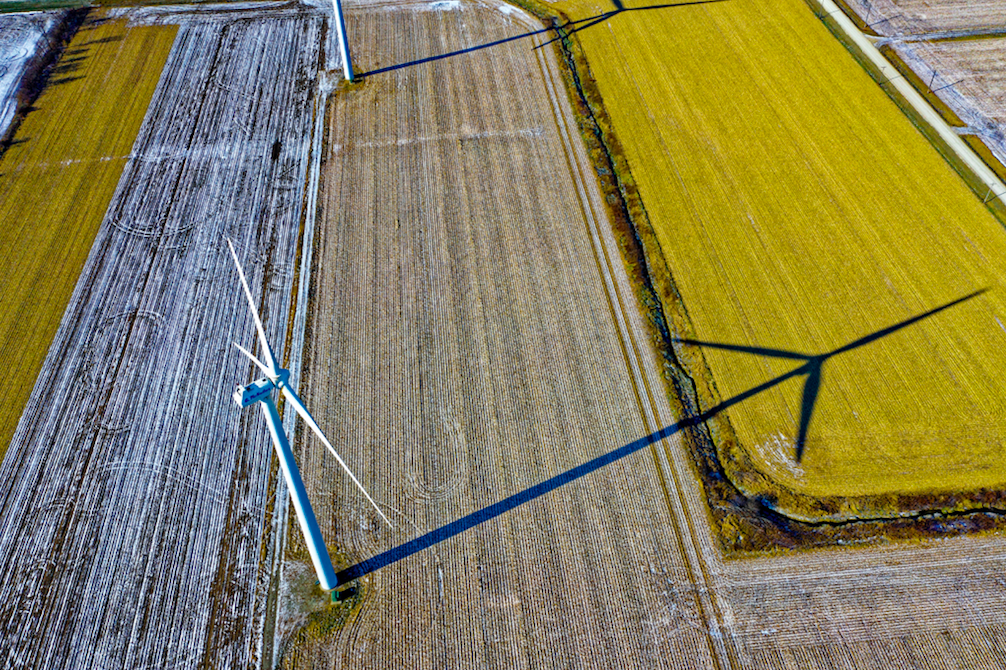
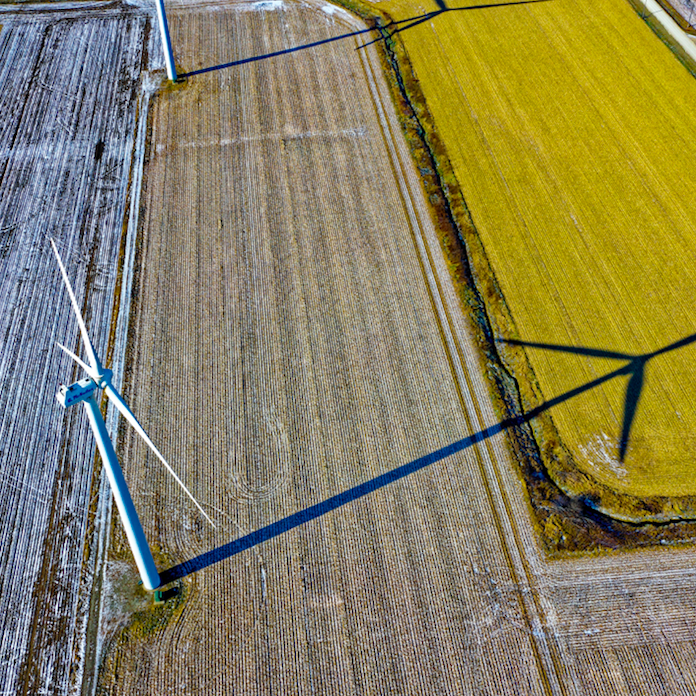
Europe’s ongoing energy crisis is shaping how businesses are setting and accomplishing climate goals in advance of COP27 this year. New challenges emerged for business leaders as the demand for oil and natural gas skyrocketed this winter and continues to exceed supply in Europe. Besides geopolitical affairs, the energy shortages and rising inflation across Europe illustrate the volatility of fossil fuels and the pace at which renewable energy is scaling.
"I think the challenge we have in Europe is that while countries have agreed on the energy transition, they have not invested enough in the electrification of energy uses," said Maria Mendiluce, CEO of We Mean Business Coalition in a recent interview with TriplePundit. Mendiluce explained to 3p that the electrification of energy uses includes increasing international connections and the storage of global technology.
Predictable costs can prevent market volatility
Renewable energy is the better alternative to fossil fuels and the solution for Europe’s energy crisis, according to Mendiluce. This is because renewable resources like solar, wind and hydropower are primarily fixed costs which makes its prices predictable. And this avoids high volatility in both the building heating and electricity market.
In addition to contributing to market predictability, renewables are cost effective. Levelized costs can help evaluate the revenue required to develop and build an energy generator over a period. And this metric measurement is lower for renewable energy technology than fossil fuels.
Based on financial performance, renewables are clearly beneficial. Despite Europe’s increasing climate ambition, its electricity is comprised of 20 percent wind and solar resources and 13 percent of hydropower. So, what is preventing the acceleration of renewable energy projects?
The challenges of bringing renewable energy to consumers
There are various challenges such as slow permits and long-term predictability that businesses face when bringing renewables to consumers, according to Mendiluce. She pointed out to 3p that progress will also be dictated by how fast policy makers and local and national government create policies to introduce renewable energy to different sectors. In addition to policy, infrastructure and storage capacity is another area for development and investment for governments.
The renewable energy transition does come with challenges. Developing clean energy systems in Europe requires analyzing weather hazards on existing infrastructure, international tensions, and energy demand, amongst other factors. However, these challenges can be overcome with a synergistic approach. For example, governments can develop policies and regulations, provide financial resources and implement incentives for transition-aligned action. On the other hand, businesses can design and implement the infrastructure needed for clean energy systems.
How businesses are responding: strategic thinking and goals
When observing business and policy within the workings of We Mean Business Coalition, Mendiluce is seeing businesses focus on commitment, reducing emissions, investing in nature and consistency. She explained to 3p that businesses that commit to climate goals need to quickly move to action. This can happen in operations or in the value chain. Mendiluce also pointed out that while businesses understand the need to preserve nature, in pursuance of reducing emissions, investment in nature doesn’t replace their own decarbonization. And this is exceptionally important for businesses when establishing trust.
Collaboration and reporting progress for European states and businesses are tools that enforce consistency in climate action. From Mendiluce’s perspective, renewables need to be deployed at a massive scale. To advance the renewable energy transition, she explained that collaboration between states is crucial. "Because of the intermittency of renewables, they will create international connections and will help and mitigate some of the viability of the resources,” said Mendiluce. This joined effort will commit multiple players to the transition to clean energy and advance solutions to any problems that arise.
Mendiluce points to how Gucci and the Italian international bank, Intesa Sanpaolo, have continued an ongoing collaboration and even its recently expanded their partnership as an example of working closely together across value chain. Initially, Gucci partnered with Intesa Sanpaolo to provide preferential loans to small and mid-sized enterprises (SMEs) that report progress aligned with sustainability. Now, the collaboration has expanded to focus on the transition of business supply chains towards more responsible and sustainable processes.
COP27 may be months away but governments and businesses must start acting now. Europe’s energy crisis points to the complexity of international connections, the building of infrastructure and the supply chain. These are undeniable issues that influence the pace of the renewable energy transition, the pace of which must be accelerated.
Image credit: Tom Fisk via Pexels
To Find Progress in Clean Energy Development, Look to Utility Regulators


Almost half of the states in the United States now have 100 percent clean energy goals targeted for 2050, and others for 2040. Washington D.C. has the ambitious goal of 2032. Despite increased commitments, the U.S. still only relies on renewables for 12 percent of its energy needs.
One universal challenge to achieving these clean energy targets is transforming grids. “If you look at all utilities, and what's the dominant behavior, it is that they're not doing much in fossil fuels and renewables," Galina Alova, from the Smith School of Enterprise and the Environment at the University of Oxford, told the BBC in 2020. "So they might be doing something with other fuels like hydro power or nuclear, but they're not transitioning to renewables nor growing the fossil fuel capacity,” she added. A study from the end of 2020 found that, globally, a mere one-tenth of energy suppliers were prioritizing sources of clean energy over fossil fuels.
The Hawaii model
Back in 2014, Hawaii was the first state to create its 100 percent clean energy goal. Today, it is setting an example for the nation as it pursues this goal — not in technological innovation, but in utility regulation. Last month, Hawaii’s utility commission approved performance-based regulations and transitioned away from the standard cost of service regulation model, which incentivizes selling more electricity and building more assets.
The new model incentivizes cost cuts, improving performance and service and building renewable infrastructure. Rewards and penalties are built into the system.
Even though Hawaii is the first state to implement the model, Jim Kelly, Hawaiian Electric’s vice president, recently told National Public Radio (NPR) that performance-based regulations will become the new norm. And, he said, there are business benefits to doing well under that model: “If we can continue to make that [solar] interconnection experience a positive thing, then it's potentially up to three million dollars upside for us.” Not reaching the annual solar interconnection minimum could mean nearly a million dollars in fines but getting enough sources of clean energy online by 2023 could mean a bonus as big as $15 million. He told NPR that since the new regulations have been in place, they have been getting customer solar systems online in half the normal time.
Utilities find a business case in pursuing clean energy
Finding leadership in the remote archipelago makes sense when considering its dependence on fossil fuels. According to the U.S. Energy Information Administration, Hawaii is the most petroleum-dependent state, and all that fuel (supplying almost two-thirds of electricity generation) is shipped across a couple thousand miles of ocean to get to the islands.
Shipping costs also hike up retail prices. Hawaii has the highest average in the nation. But even when considering clean energy on its own, the state benefits economically from prioritizing these alternatives. Sources like solar and wind have become less expensive to produce in the majority of the U.S. a 2019 study found.
Utility investors are clear on these bottom-line benefits of renewability. Low-carbon energy development is proving to be an opportunity for profit-growth and resilience. In response, investor pressure surrounding climate action is ratcheting up. In October, a group of investors representing more than $60 trillion in assets put the fire under utilities to decarbonize by 2035. Given this context, it’s no surprise Hawaiian Electric saw its credit rating improve on Moody’s, S&P and Fitch as the new regulations came into effect.
Is a revolution in utility regulation on its way?
While Kelly predicts that performance-based regulations will be spreading to the far reaches of the U.S., reforms may not come so simply. The harsh reality is that not every public utility commission is independent from the industry it is designed to regulate. Some utilities have resorted to what can be best described as bribes to keep clean energy development at bay. In 2014, Arizona’s largest utility sent millions in dark money to candidates running for the state’s Corporation Commission in an effort to shrink homeowner incentives to install rooftop solar panels. Clearly, in some cases, utility customers will have to raise their voices to influence change. But as utilities struggle to remain profitable under current circumstances, it’s clear the tide of regulatory reforms can’t be held back forever.
Image credit: Mike Baker via Unsplash
The Brazilian Billionaire Who Defines Social Impact


In case you missed it, she made the Time 100 most influential people last year. But Brazilians has been familiar with Luiza Trajano and her accomplishments for far longer. An attorney by trade, she took what was once her parents’ retail store and built it into the department store giant, Magazine Luiza (also known as Magalu), which boasts more than 1,400 locations, 50,000 employees and garners more than $5 billion annually in revenues.
With that track record of success comes a commitment to social justice that is unmatched by any CEO or chairperson out there.
There’s her commitment to women’s empowerment, embodied in her role launching Grupo Mulheres do Brasil (Women of Brazil) a decade ago. With almost 100,000 members, the organization focuses on equal rights, fair access to education and improved healthcare for Brazil’s women.
On the subject of healthcare, she has been relentless in boosting Brazil’s COVID-19 vaccination program, rallying the private sector to raise funds while urging the government to do more. “The difficulty is not the money, but the lack of vaccines,” she said at a conference of Brazilian business leaders last fall. She and Women of Brazil have raised the equivalent of millions of dollars (50 million reals) to provide both vaccines and freezers in accelerating such efforts.
Trajano has also been among corporate executives speaking out against the behavior of Brazil’s president, Jair Bolsonaro, who according to critics has been taking steps to win re-election this year, a race in which so far polls have suggested he will lose.
Her boldest efforts, however, have been at taking on structural racism across Brazil. Last fall, she and Magazine Luiza’s current CEO, Frederico Trajano (her son) announced that the company is limiting the company’s popular management training program to Black Brazilians as the means to expand access to the country’s corporate ladder to all Brazilians.
“We believe that a diverse company is a better and more competitive company,” Patrícia Pugas, Magazine Luiza’s executive director of human resources, told CNN last November. “We want to develop black talent, act against structural racism and help fight Brazilian inequality.”
Trajano’s stand on diversity in her company’s management ranks has resulted in calls for boycotts, ongoing attacks on social media and even demands by lawmakers to investigate the company.
Nevertheless, she insists her company is going this route to take on longstanding racism in Brazil, which did not end slavery until the 1880s.
“Beyond the economic and social aspects, slavery left a very strong emotional mark, which is a society of colonizers and the colonized,” Trajano said in an interview with the New York Times earlier this month. “Many people have never felt that this is their country.”
Whatever one feels about her company’s tactics, no one can dispute it’s a bold stand in contrast with U.S. CEOs, who during 2020 said they “stood” with Black Americans in the wake of George Floyd’s death, but since that summer have been largely silent on creating opportunities for people of color.
“In a world where billionaires burn their fortunes on space adventures and yachts, Luiza is dedicated to a different kind of odyssey,” Luiz Inácio Lula da Silva, the former president of Brazil, wrote for Time last fall. “She has taken on the challenge of building a commercial giant while constructing a better Brazil.”
Image credit: Government of the State of São Paulo via Wiki Commons
Could the Four-Day Workweek Be the Answer for the Great Resignation?


At last check, 4.5 million Americans quit their jobs in one month alone. Overriding evidence suggests employees are leaving not over money but over how they are treated in the workplace. While CEOs have indicated that employees fleeing for the exits is their top concern, everyone is struggling to find their own solution for the Great Resignation. And based on the headlines, the struggle is real.
“Create better jobs,” says the current U.S. Secretary of Labor.
“If consumers want the continued convenience of a 24/7 economy, it is necessary to consider what price they are willing to pay for that convenience,” wrote economics professor Laura J. Owen as she insisted workers in the service sector should score improved benefits, from vacation time to the choice to participate in retirement plans.
Plus, concerns about the ongoing pandemic have pushed workers to find remote work out of fears for their safety, as well as worries about childcare and coping with other family challenges.
If you’re in a mood to doom-scroll and reading this on your phone, Buzzfeed just posted 33 different stories from workers who got fed up, left their jobs and in turn have kept fueling this Great Resignation.
At a time when employees are proving that they are more productive working from home, it may be time for companies to take a hard look at the four-day workweek.
The data suggest the four-day workweek train may already be leaving the station. Across the pond, 30 companies in the U.K. will participate in a six-month pilot program to see if such a change would actually work out.
One company that is launching the four-day, 32-hour workweek is Bolt, a fintech company based in San Francisco. “I think everyone thinks, ‘Oh, there’s no way you can grow fast and execute while working a four-day week,'” Ryan Breslow, the company’s CEO, told Fast Company in an interview earlier this month. “We’re showing just the opposite.”
Time and again, employees are intrigued by the idea of moving from a 40-plus hour workweek to one that that is 32 (plus?) hours. One survey taken last fall found that 83 percent of employees are all-in on the idea. Further, 87 percent said they would work longer hours daily to get that extra day off. But there’s a trade-off: Almost 60 percent said trading in a shorter workweek for a smaller paycheck is a nonstarter.
To that end, companies including Kickstarter and even Japan’s iconic Panasonic are testing out the shorter workweek.
Reducing burnout could certainly help curb the Great Resignation. “A two-day weekend is not sufficient to recharge after a long, tedious workweek. One day consists of running errands, shopping for groceries, doing the laundry, tending to your children, doing work around the house or yard and the endless list of chores,” Jack Kelly for Forbes recently wrote. “You’re probably checking Slack and emails and doing catch-up work on Sunday night. Monday morning rolls in and you're still exhausted.”
On that point, many employees may tell you that in reality, they’d be scaling down from a six-day workweek if one accounts for those Saturday morning and Sunday night check-ins to prepare for the upcoming week.
Image credit: Andrea Piacquadio via Pexels
Winnebago and Airstream Envision an All-Electric RV Future


If you still believe that life in a recreational vehicle was more past then present, think again – or try to book a campsite across most of the U.S. last minute. The chances are high that scoring a campsite within the Rockies or the California coast is a fool’s errand unless you booked that prime spot several months ahead of time. And once you’ve arrived, you’ll notice many a Winnebago or other RV scattered all around you. So yes, RV culture is very much a thing as it’s a $22 billion or so market; plus the pandemic has made the recreational vehicle scene an even more popular one.
During a recent trade show in Florida, Winnebago announced it has come up with its concept e-RV, one that once available will have a range of 125 miles; that may appear short at a first glance, but the company notes that market research has shown that most RV buyers prefer to take trips under 200 miles.
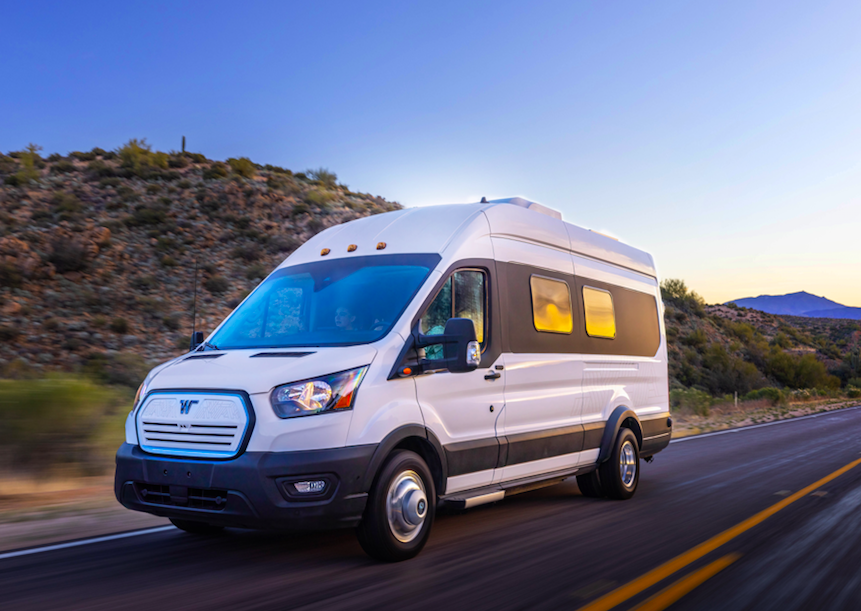
The e-RV would also include energy-efficient in-vehicle appliances to optimize battery performance. The RV’s chassis is based on Ford’s Transit platform, with Lightening e Motors providing the electrical power system. As for the battery, let’s recall why that 125-mile range shouldn’t be a huge problem: RV drivers need campsite spaces where they can be hooked up to a power supply, so they’d generally be charging during off-peak hours. Winnebago says its e-RV battery system can recharge at a high-current station in about 45 minutes.
In addition, Winnebago has indicated that the e-RV will have more of an eco-friendly ethos within its cabin, with features such as cork flooring along with woolen panels for thermal insulation.
It’s not only Winnebago that is creating buzz at this year’s Florida RV Supershow.
Thor Industries has also announced its own concept of an all-electric motorhome, as well as a 21st-century version of everyone’s boujie camping and road trip favorite, the Airstream.
Billed as the eStream, the shimmery travel trailer features an electric drive axle that eliminates any drag on range for electric cars and for conventional vehicles, helps reduces gasoline consumption.

"Our proprietary technology addresses the top concern of electric vehicle users—range limitation. Studies have established that electric vehicles experience a significant loss of range even when towing a small trailer. The technology we co-developed creates a synchronized relationship between the trailer and the tow vehicle, enabling the trailer to move in harmony with the tow vehicle, reducing the pulling effect required from the tow vehicle,” said Josef Hjelmaker, Thor’s chief innovation officer in a public statement. “This, in turn, dramatically improves the possible range of the combination. In essence, we've turned the trailer into an electric vehicle. The technology is game-changing for our industry and others.”
In case you’re still wondering why an electric travel trailer would be a big deal at all, the eStream’s battery system allows this next-gen version to move back and forth on its own power – eliminating the hassle of backing up and positioning the trailer at any site.
Mind you, both of these announcements are about concepts; as of press time, there are no official dates for when the next-gen Winnebago and Airstream go into production. Nevertheless, the fact both companies are mulling an all-electric product line shows an emissions-free future is closer than we had thought only a few years ago. Plus, camping and enjoying the great outdoors could be more of what it should be: a quieter, emissions-free experience.
Image credits: Winnebago corporate site; Thor Industries; Unsplash via Saad Chaudhry via Unsplash